MCCONNELL AIR FORCE BASE, Kan. -- 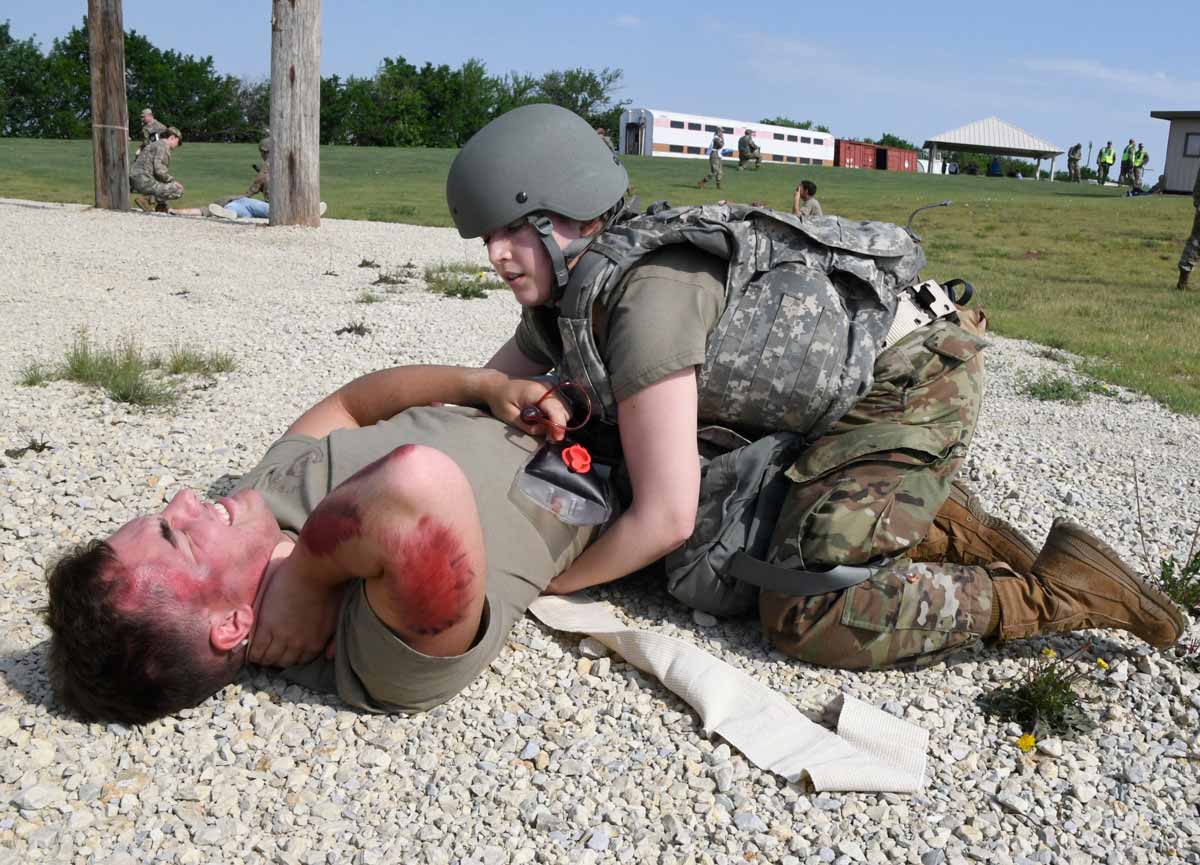
Airmen assigned to the 184th Wing recently experienced a new way of preparing for future conflicts. The training was designed to purposefully test them until they failed.
“Test to Failure is a mandate from Air Combat Command, Inspector General to plan for and execute an exercise with some substantial level of rigor,” said Lt. Col. Herman Norwood, director of staff and white cell manager, 184th Wing. “Many times, exercises are just rinse, wash, and repeat of the same processes, with very little value added in the after-action report.
Members of the 184th Wing's Inspector General and Plans offices spent more than six months developing an exercise that would satisfy the mandate.
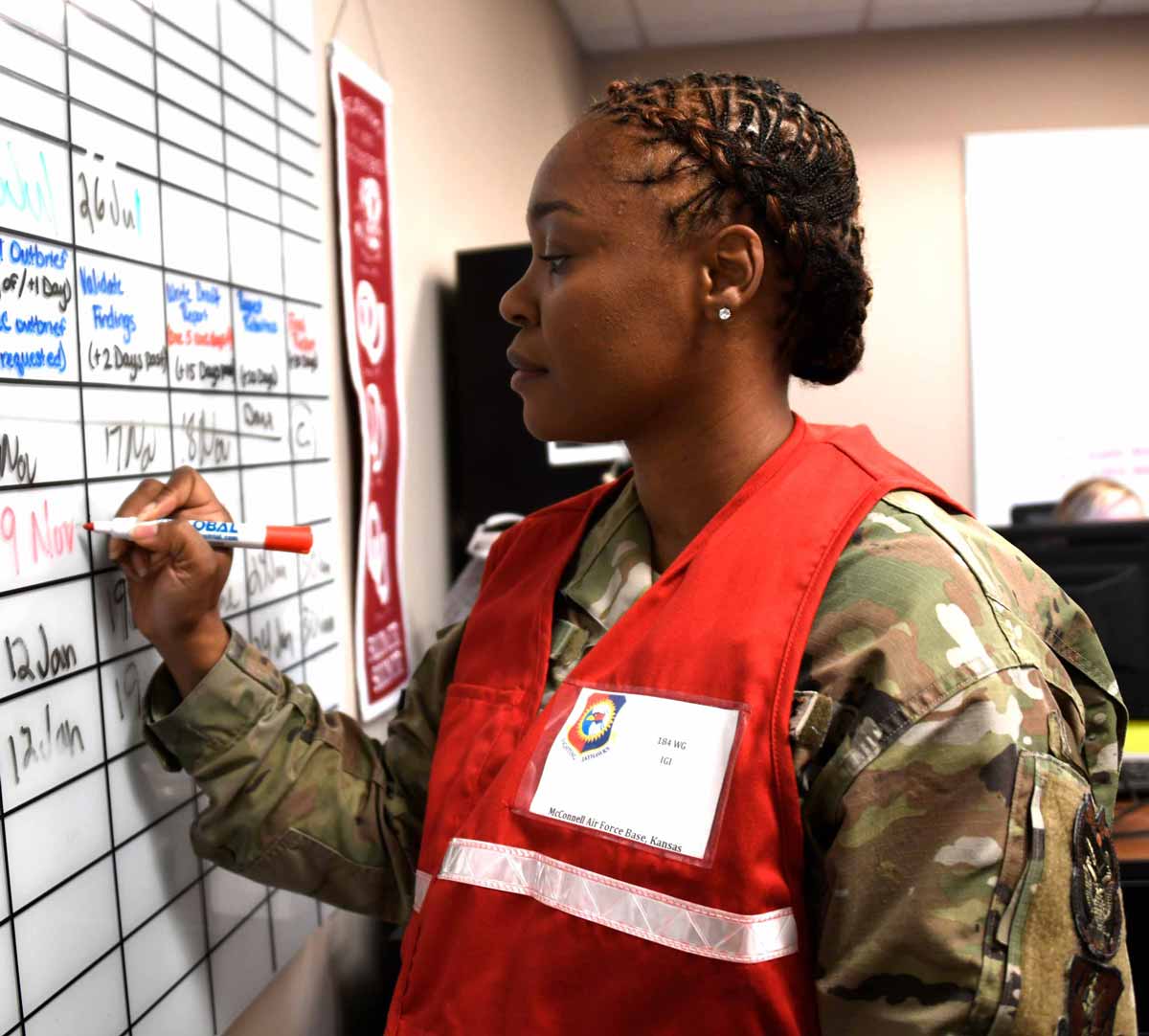
“With this mandate, test to failure meant we have the responsibility to drive Airmen outside their comfort zones, to inspire critical thinking, and to apply nebulous concept of operations to normal practices via asymmetric threat and scenario replication,” Norwood said.
To accomplish the test to failure mandate, the 184th Wing conducted Exercise Jayhawk Talon during the June 2023 drill. The purpose of the exercise was to challenge the ability of Airmen to rapidly deploy and operate in a contested environment.
The scenario united Airmen of all ranks, experience levels, and career fields from across the wing.
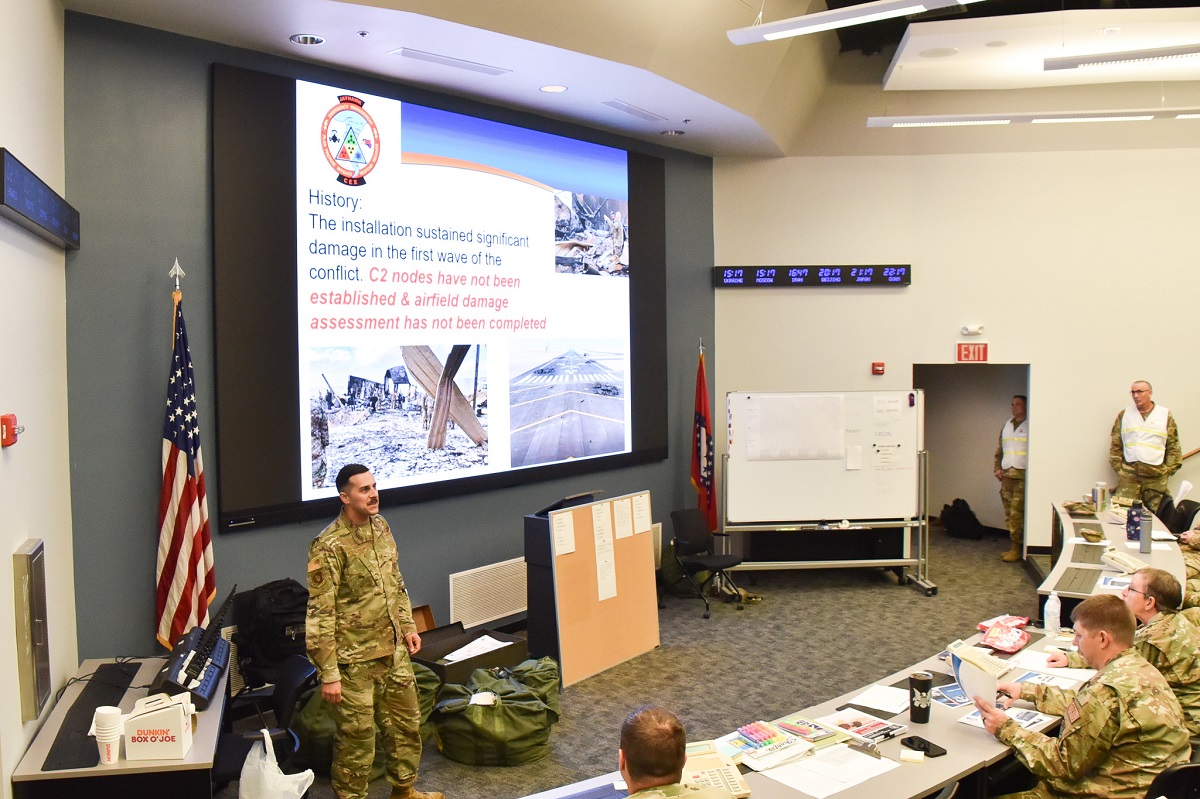
The Scenario
As major world powers engaged in a regional conflict in Europe, a humanitarian crisis unfolded the likes of which have not been seen since World War II.
With all eyes on Europe, another threat in the Indo-Pacific region saw an opportunity to amass forces across its southern border and readied its nuclear capabilities.
In response, top U.S. military leaders in the Indo-Pacific Command requested an immediate increase of American forces and weapons systems.
The call-up required units to generate, employ, and sustain combat-ready Airmen and equipment in a contested, degraded, and operationally limited environment.
“The main outcome of Exercise Jayhawk Talon was to create a plausible and credible scenario which would test the wing’s ability to generate and support contingency operations in the U.S. Indo-Pacific Command theater of operations,” said Norwood.

While it’s important for strategic leaders to recognize the threat and request additional forces, it’s the responsibility of each Airmen to be ready for such a call.
To be combat-ready, Airmen are required to keep up with administrative items such as records of emergency data, powers of attorney, wills, ancillary training, and family care plans.
They also must be medically fit for deployment. Each Airman should be compliant with vaccinations, dental, medications, and other job-related medical requirements prior to deploying.
One missing item, as trivial as it may seem, can delay or prevent Airmen from being ready at a moment’s notice. It can also cause turmoil and despair at home should tragedy happen during deployment.
To prevent these issues, unit deployment managers and commander support staff specialists across the wing ensured that all Airmen within their squadrons were compliant during the weeks leading up to the exercise.
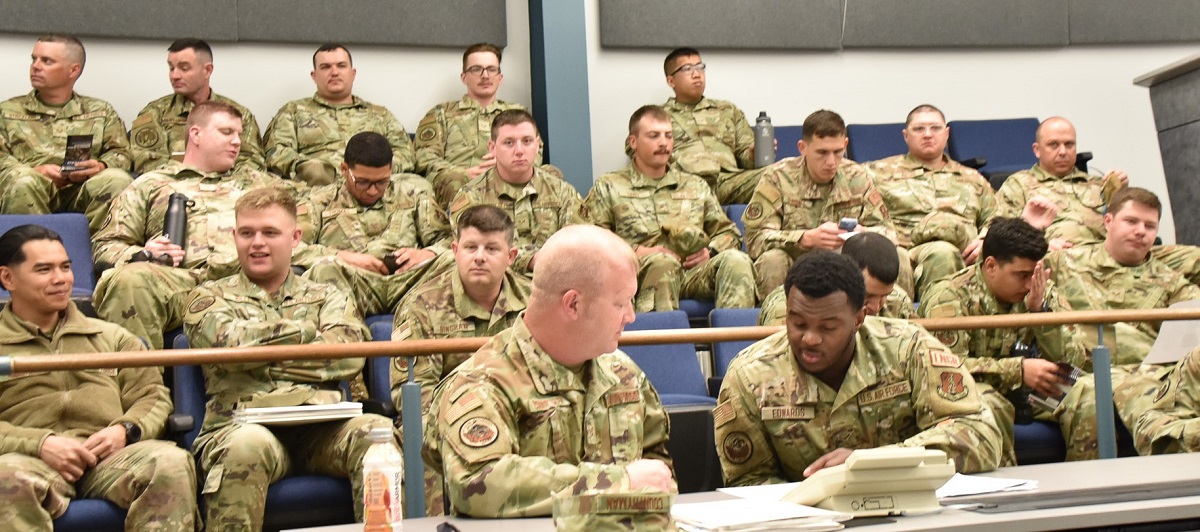
Red Team and A Cyber Contested Environment
During Jayhawk Talon, the 177th Information Aggressor Squadron acted as the adversary, or “red force,” staging attacks on the 184th Wing’s network and installation, while the “blue force,” worked to identify, prevent, and respond to nefarious effects on net and off.
The 177th IAS studies, emulates, and teaches adversarial cyber tactics, techniques, and procedures on live networks and Air Force installations across the nation.
By showing the 184th Wing actual tactics used by adversaries, wing personnel can gain an understanding of how to identify enemy activity, respond to and report it correctly.
The 177th IAS commander, Lt Col Dave Carpenter, explained that, in addition to producing cyber effects on the network, his team’s role in this exercise was to act as a nation-state level threat with the objective of gaining close access to base facilities and networks.
“With physical and cyber access, adversaries could collect operationally relevant data in order to impact operational effectiveness of blue forces,” said Carpenter.
By providing a real look at a cyber contested environment, the 184th Wing exercised the ability to “fight to get to the fight” and more importantly learned where an adversary might exploit accesses that could cause a mission to fail.
The wing has already started applying lessons learned to make their mission more robust.
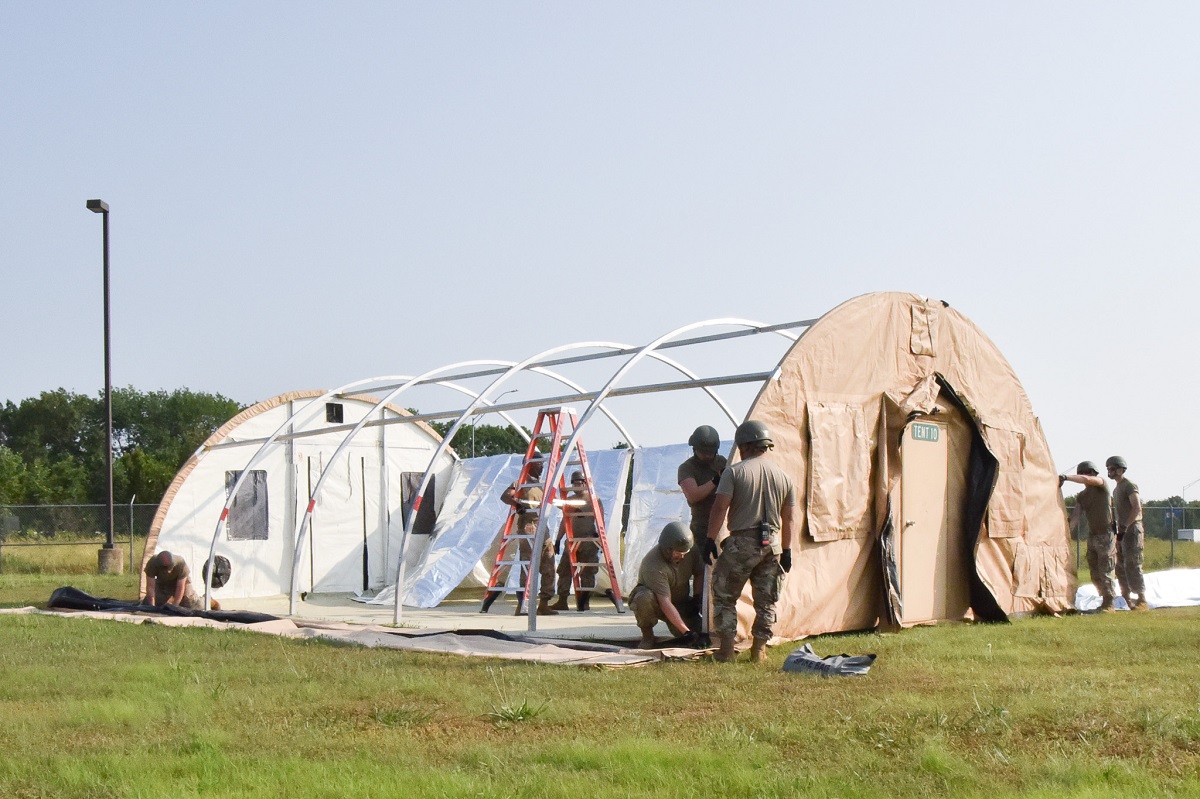
Base Recovery, Buildup, and Troop Movement
In late May, the 184th Civil Engineer Squadron received orders to deploy to a forward location to recover a damaged airfield and construct a bare base. The simulated base was at Fort Smith, Arkansas.
The civil engineers had 24 hours to fix the airfield by using rapid runway repair methods. Their goal was to repair the runway well enough that aircraft could land and launch sorties.
This was in preparation for the main body of personnel that would be arriving soon.
The civil engineers were successfully completed their mission despite chemical, biological, and artillery attacks.

In Kansas on June 3, Airmen from around the 184th Wing departed their home station and arrived at Base Y (Hangar 41 at McConnell Air Force Base); a simulated main hub for processing personnel arriving in country.
That same day, a large contingency of Airmen departed from Base Y to a forward operating location called Base X. Airlift was provided by the Kansas Air National Guard’s 190th Air Refueling Wing.
The simulated base was at the Kansas Army National Guard Regional Training Center, Smoky Hill Weapons Range, near Salina.
At Base X, the 134th Air Control Squadron quickly constructed a small compound complete with satellite and radar communications.
From the minute they arrived at a grass field with trucks, to the moment they had an operational camp, the Airmen had the site set up in about six hours (excluding a weather delay), according to Master Sgt. John Dingman, 134th ACS.
Additionally, the Kansas Army National Guard, 35th Military Police, also deployed to Base X. This introduced Airmen and Soldiers to the benefits and challenges of working in a joint environment.
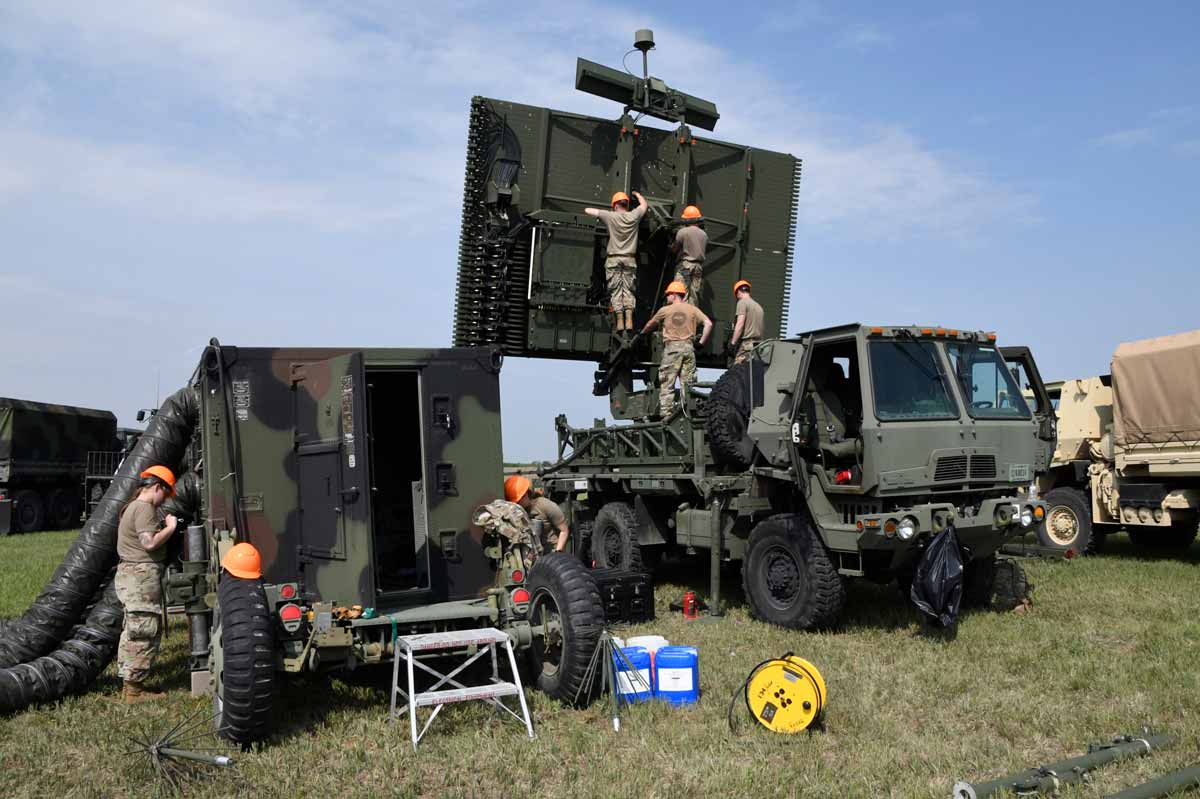
Funds In the Sun…and Hot Chem Suits
Over the next two days, incidents occurred that tested personnel at Bases X and Y.
On June 4, a small uprising occurred from locals after a shepherd’s cow died because of U.S. military activity at Base X. This required the 184th Comptroller Flight, located at Base Y, to initiate a payment for reimbursement.
“[This] was unique because the Paying Agent and Dispersing Agent role filled during this portion of the exercise is something we only get to do in a deployed environment,” said Senior Master Sgt. Morgan Colleran, senior enlisted leader, 184th Comptroller Flight. “During our normal stateside mission, we don’t perform cash handling operations.
“This inject gave our Drill Status Guardsmen a chance to exercise what they have learned during contingency training and 7-level school and prepped them for potential upcoming real-world deployments.”
Working through the network outage required critical thinking.
“Being innovative and forward thinking, our Airmen deployed with a hotspot,” said Colleran. “This allowed them to look up what was needed to transfer cash properly. Our Airmen were also prepped with hard copy forms to utilize for proper documentation of the transfer of funds.”
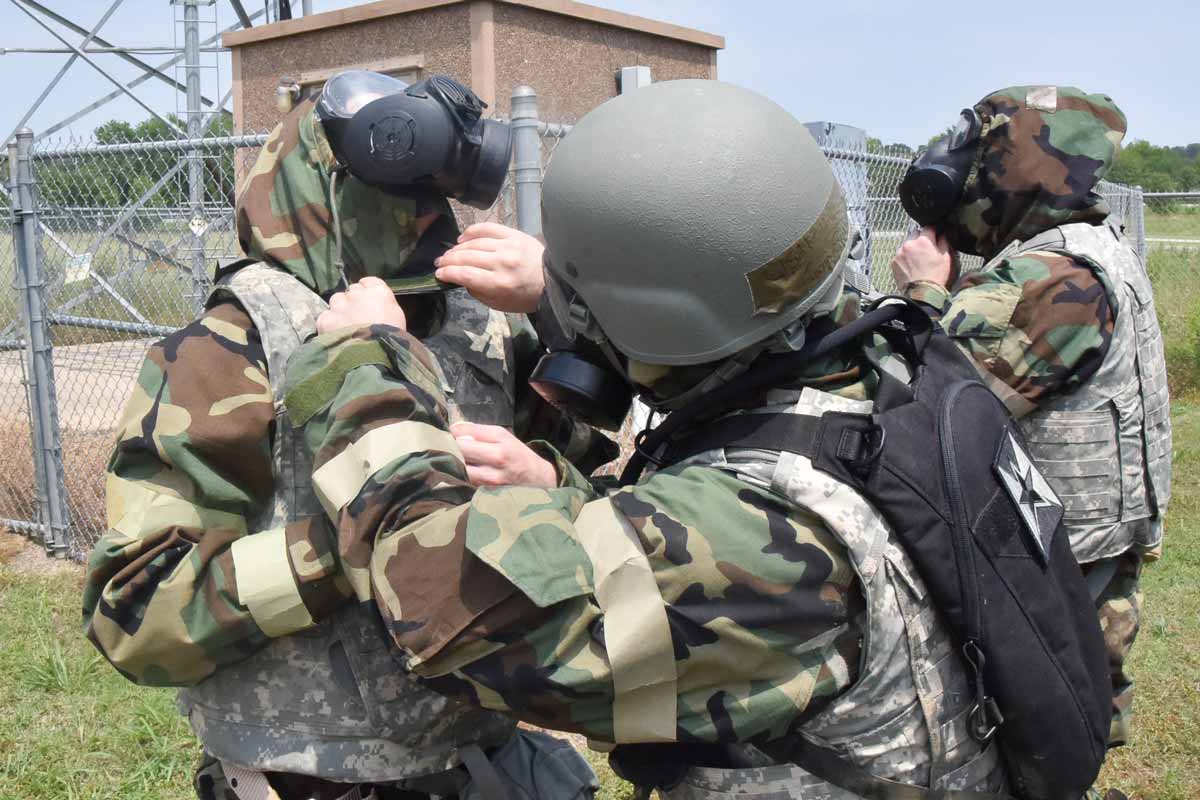
Later that morning, Base X initiated Alarm Yellow, MOPP 2, soon followed by Alarm Red, MOPP 4, after personnel experienced illnesses and injuries related to harmful chemicals.
The Airmen continued setting up and securing the base while wearing chemical warfare suits and gas masks in the hot, humid environment.
The general release was given a few hours later and the injured personnel were transported out of the area by U.S. Army medical helicopters.
Personnel gladly removed the MOPP gear after spending nearly four hours in it.
Toward the end of the day at Base X, another uprising from the local population began. This time it was more aggressive which signaled increasing unrest in the area.
Airmen and Soldiers from all parts of the base responded. No matter what their primary job was, they donned riot gear and protected the base.
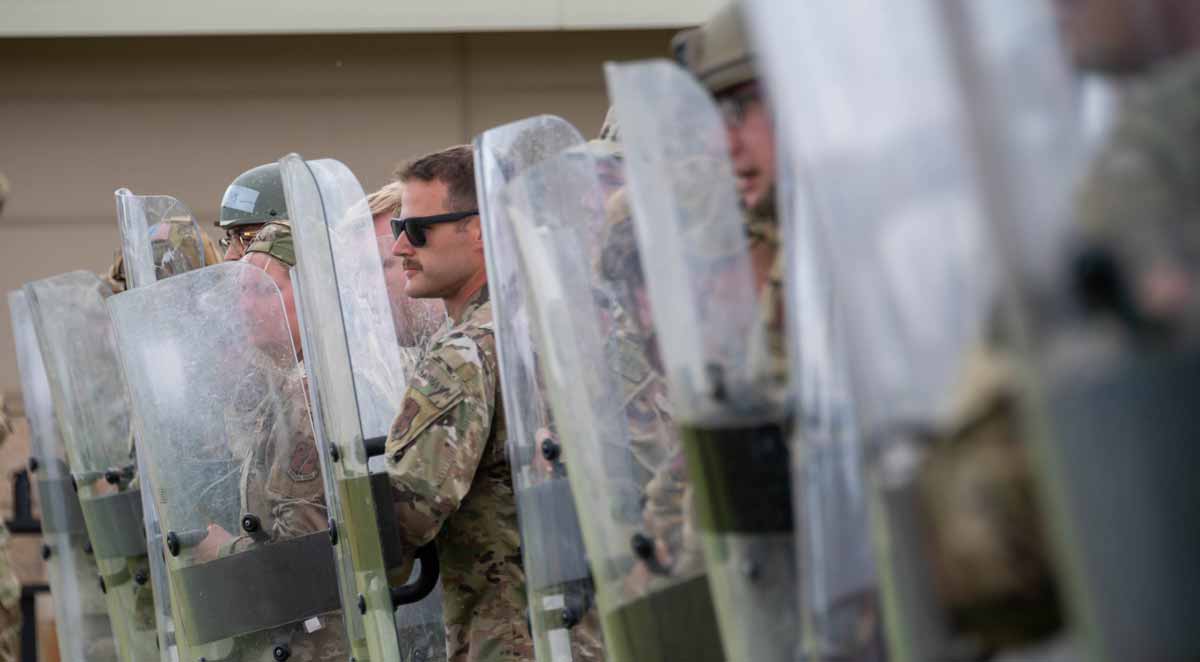
And Now for the Main Event
During the morning of June 5, enemy forces launched an artillery attack on Base X. Some of the ordnance reportedly had nerve agents, forcing the camp to go into Alarm Red, MOPP 4 once again. All personnel donned chemical warfare suits and took cover.
After the All Clear, General Release was given, a few personnel showed symptoms of nerve agent poisoning. Medical personnel assigned to the 184th Medical Group immediately responded with triage and treatments.
Meanwhile, a contractor stole weapons from the armory and helped two enemy insurgents gain access to Base X. The trio of active shooters caused mass casualties but were quickly neutralized by the 184th Security Forces Squadron Airmen and the 35th MP Soldiers.

Army and Air Guard personnel performed triage and lifesaving measures to approximately 20 shooting victims. Among the injured was the Dispersing Agent who was bringing the reimbursement funds to the shepherd whose cow was killed.
Medical helicopters transported the victims out of the area that afternoon.
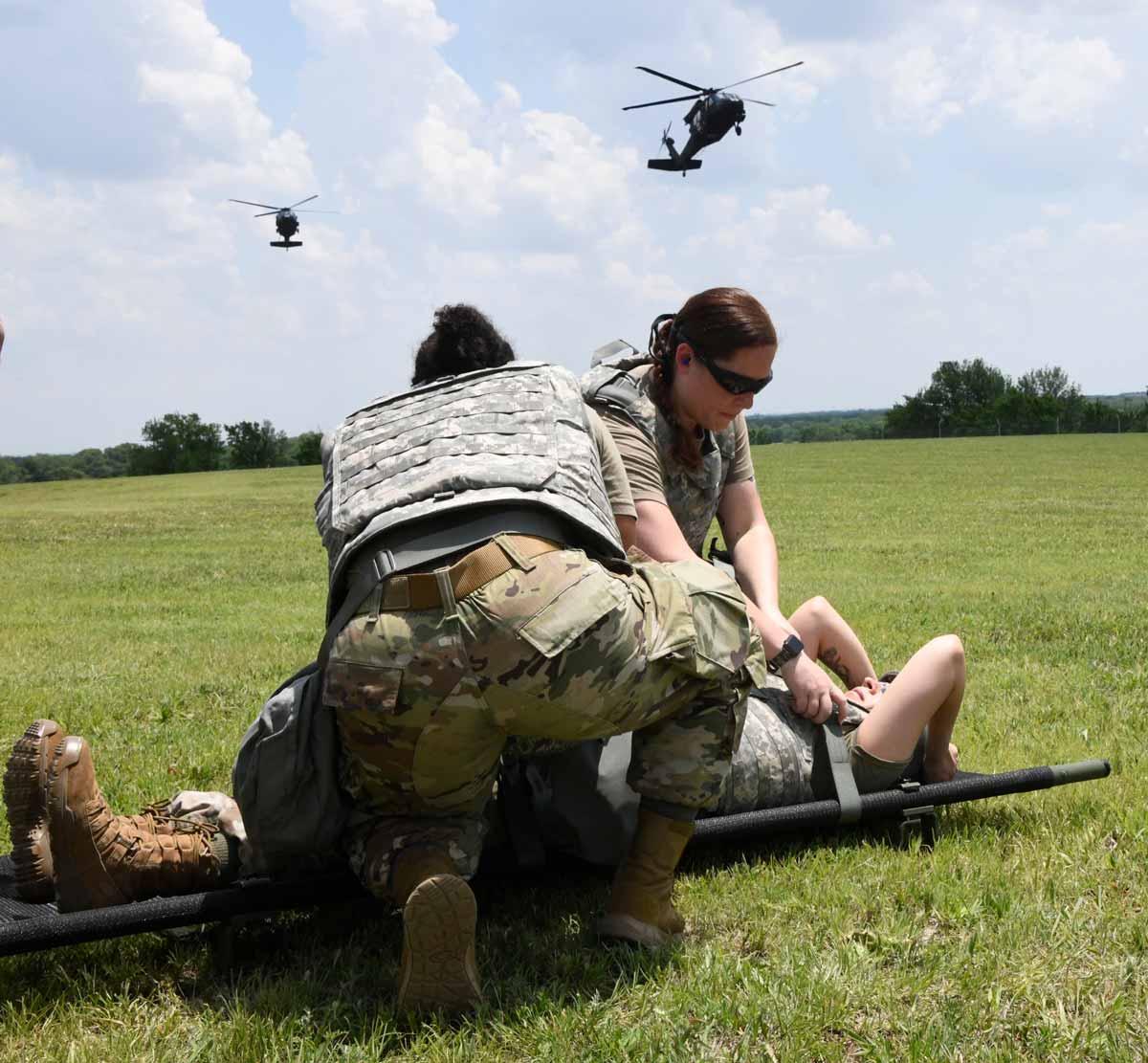
Local civilians, played by the 184th Student Flight, the 184th MDG, Detachment 1, and other agitators, saw the helicopter movements and wanted to be evacuated because of the aggressive forces in the area. They attempted to overwhelm the helicopter landing pad and force their way onto the aircraft.
A large-scale riot ensued, and Army and Air National Guard personnel were dispatched to quell the civil unrest. The riot was large enough that all available personnel were sent to the line to protect the area, no matter what their job was or how much experience they had in riot control.
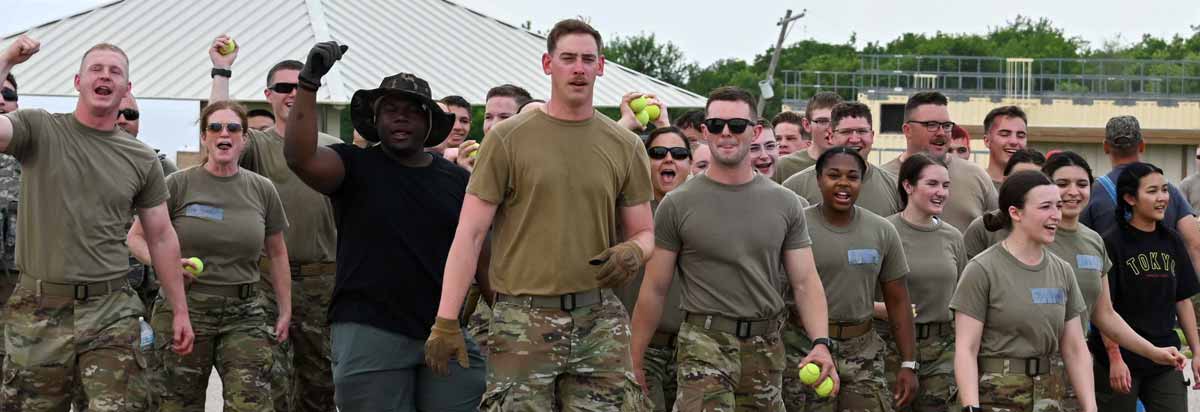
The scene was chaotic. Rioters shouted, threw objects, and attempted to rush through the line. The Airmen and Soldiers stood shoulder-to-shoulder in riot gear with shields and batons.
With a cadence of “One…Two…Three…GET BACK!” the U.S. personnel drove the rioters away from the landing pad.
After a show-of-force by U.S. military aircraft, the crowd dispersed, and Base X returned to normal operations. This ended the scenario for the day.
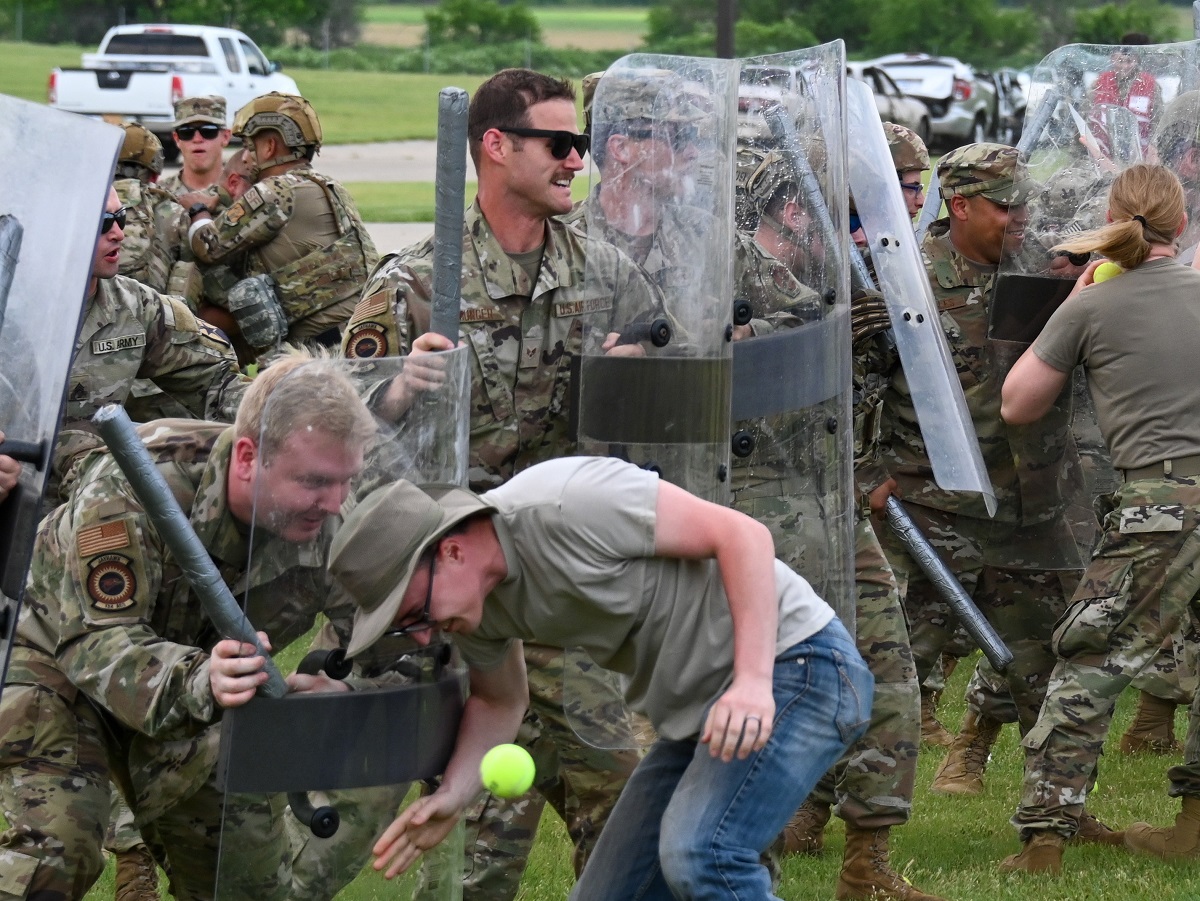
On June 6, Base Y came under heavy attack which required all personnel at Base X to quickly redeploy to provide reinforcements. The Airmen at Base X packed up, tore down, and were transported back to the main base.
The exercise ended soon after.
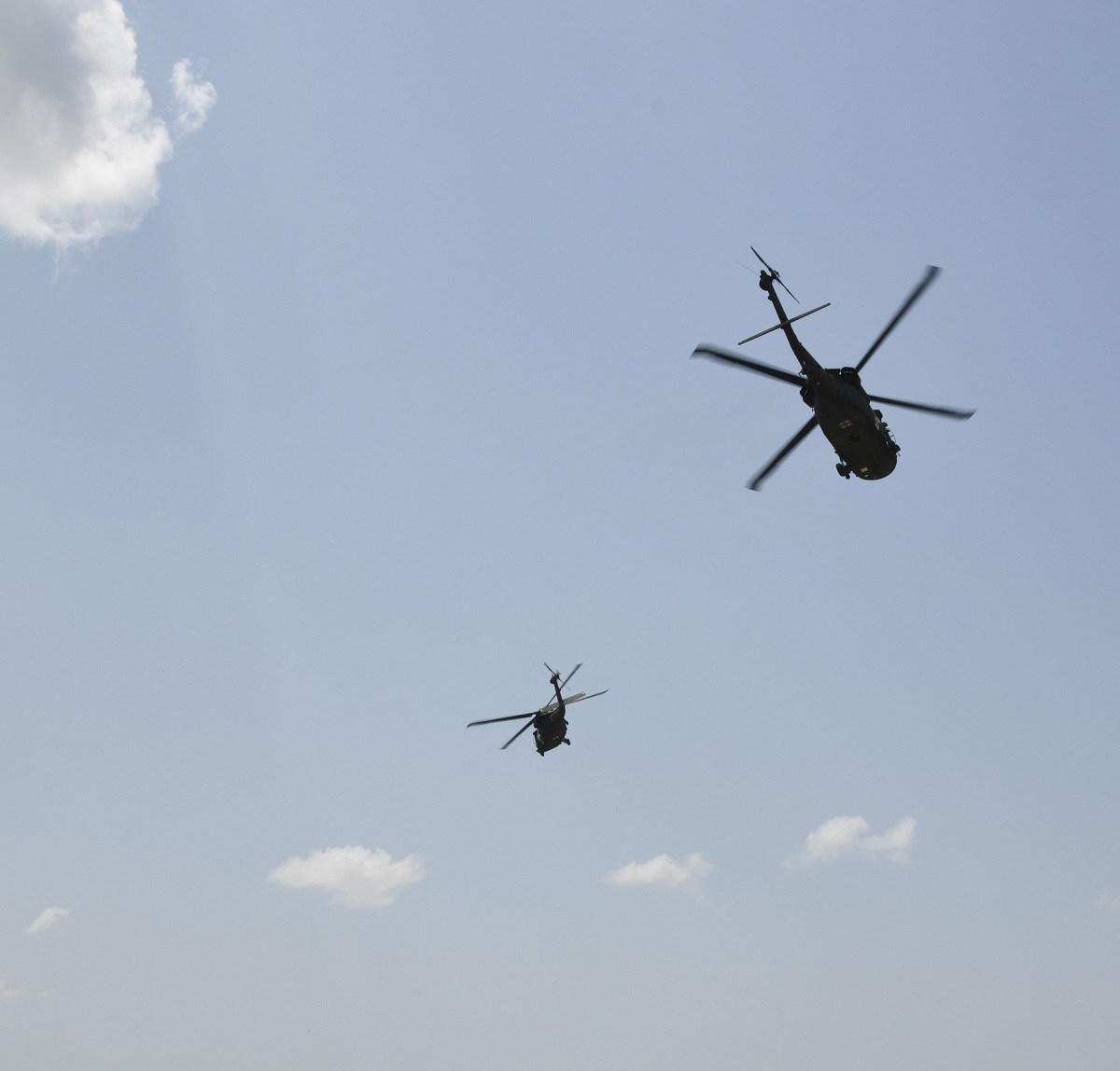
The Outcome
The purpose of Exercise Jayhawk Talon was to test the 184th Wing’s ability to rapidly deploy and operate in a contested, degraded, and operationally limited environment.
The Airmen practiced Agile Combat Employment techniques to quickly respond to unpredictable and volatile situations.
“Overall, we could not be more happy with the outcome of the exercise,” said Norwood. “The team’s goals were to meet the commander’s intent, instruct future exercise planners in proper application of REAPER concepts, test to failure, but most importantly, have fun.”
The exercise prepared Airmen for the kinds of conflicts and movements that are expected if contingency operations occur in the Indo-Pacific region.
“Exercise Jayhawk Talon showcased the adaptability and warfighting spirit of the 184th Wing,” said Col. Steve Smart, commander, 184th Wing. “Our Fighting Jayhawks rose to the occasion as they always do. They were equipped, capable, and motivated to overcome any challenge put before them. Thank you to everyone who helped plan and execute the exercise. You proved that our Airmen are multi-capable, agile, ready, and reliable.”